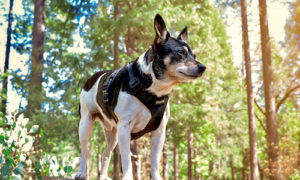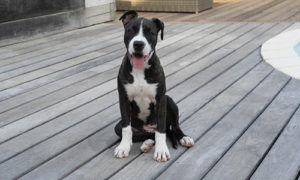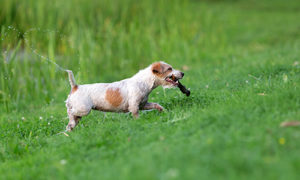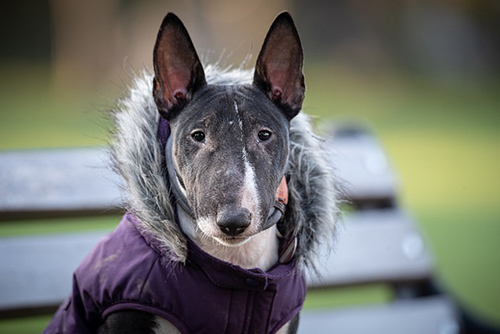
Before getting to the Miniature Bull Terrier price, let’s learn a little about this playful and mischievous breed. This miniature terrier is a result of the crossing of various terriers with the bulldog, where the resulting offspring came in a wide variety of sizes. Therefore, breed enthusiasts divided them by size for show classification. Breeder’s exhibited Toy Bull Terriers until 1914. Unfortunately, they did not develop a strong following. Slightly larger Bull Terriers tended to be better overall quality and eventually stabilized as the Miniature Bull Terrier. In 1963, the AKC recognized the breed and put it into its Miscellaneous Class.
Miniature Bull Terrier Breed Standard
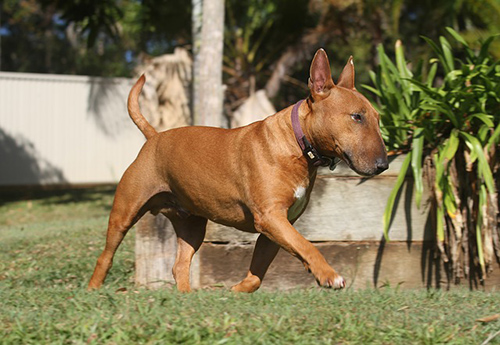
The Mini Bull Terrier is a powerfully built, squarely proportioned, active dog, distinguished by its long, oval-shaped head. It has small, thin, erect ears, a black nose, and dark eyes with a piercing glint. Also, they have a muscular neck; a short, strong back; and a broad chest. The short tail is set low, subtle, and tapered, and carried horizontally. Their legs are moderate in length, sturdy, and straight, and the feet are round and compact.
Breed Facts
Activity: These Bull Terriers are an exuberant, fun-loving breed that usually remains quite lively until five to six years of age. Miniature Terriers need plenty of daily activity and personal attention, especially interactive play. Puppies should not engage in strenuous exercise. If confined or neglected, they’re apt to become bored and resort to bad habits such as barking, chewing, or excavating the back yard.
- POPULARITY: Uncommon
- FAMILY: Terrier, Mastiff, Bull
- AREA OF ORIGIN: England
- DATE OF ORIGIN: 1800s
- ORIGINAL FUNCTION: Companion
- TODAY’S FUNCTION: Earthdog trials
- OTHER NAME: None
Miniature Bull Terrier Temperament
Breed enthusiasts describe the Miniature Bull Terrier as a full of fire, courageous, even-tempered, and amenable to discipline. This dog is a quintessential terrier—curious, playful, good-natured, and wholly dedicated to its family. Stubborn and brave, they have a well-developed guardian instinct and make excellent watchdogs. They require consistent, firm discipline, and you have to supervise puppies closely. Male Miniature Bull Terriers may not play nice with other male dogs.
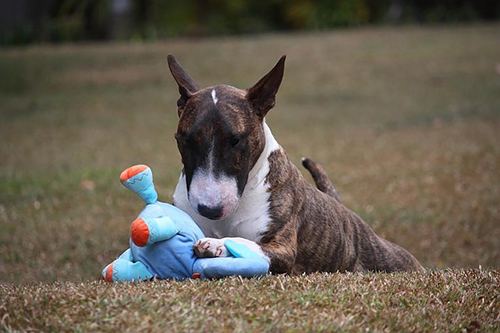
Despite this dog’s small size, it is not a lap dog. It is just as tough as the larger dogs and seems more likely to want to prove itself even more. It is sweet, adoring, and devoted, but not fawning. These Mini Bulls love to play and investigate. Also, they like to dig, and as mentioned earlier, they need plenty of exercise.
Grooming
The Mini Bull Terrier needs weekly brushing. We recommend brushing more often during seasonal shedding in spring and fall.
Health
- Major concerns: deafness (whites)
- Minor problems: glaucoma, lens luxation
- Occasionally seen: kidney disease
- Suggested tests: hearing (whites), eye, cardiac, kidney
- Life span: 11—14 years
- Weight: 25—33 pounds
- Height: 10—14 inches
Miniature Bull Terrier Price and breeder information
Before purchasing a dog, learn about the breed through careful research, attending dog shows, talking to breeders, and joining the BTCA. Do not buy a puppy without a health guarantee.
- Parent club: Bull Terrier Club of America (https://www.btca.com/)
Thanks to their egg-shaped head, funny face, and loving personalities, the Mini Bull Terrier quickly became the favorite of many dog owners. Europe and the United States lead the world in having these loving dogs as pets. However, the Miniature Bull Terrier price can cost you about $1200 for a puppy on average. Also, the annual cost can be in the range of $700 to $900.
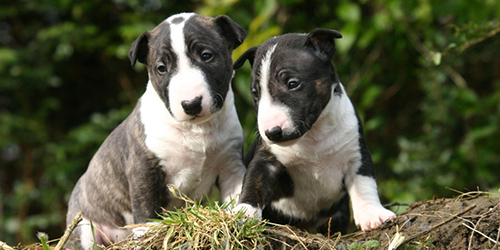
Furthermore, keep in mind that the first-year costs will be the costliest. You will have to purchase essential products such as a doggy mattress, food bowls, cage, etc. These items can cost $600 to $1000 depending on the quality and purchase location. However, the best way to save money on these essential items is to buy second-hand, which can cost about $200 more or less. Along with the Miniature Bull Terrier price, you’ll also have to consider pet insurance. Insurance is worth it because if your pet gets sick, insurance will help offset some of the costs in treating your canine companion.



